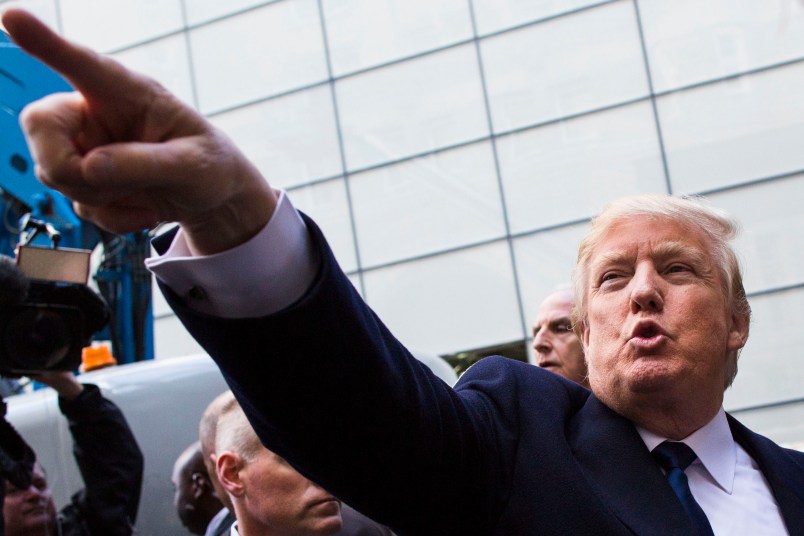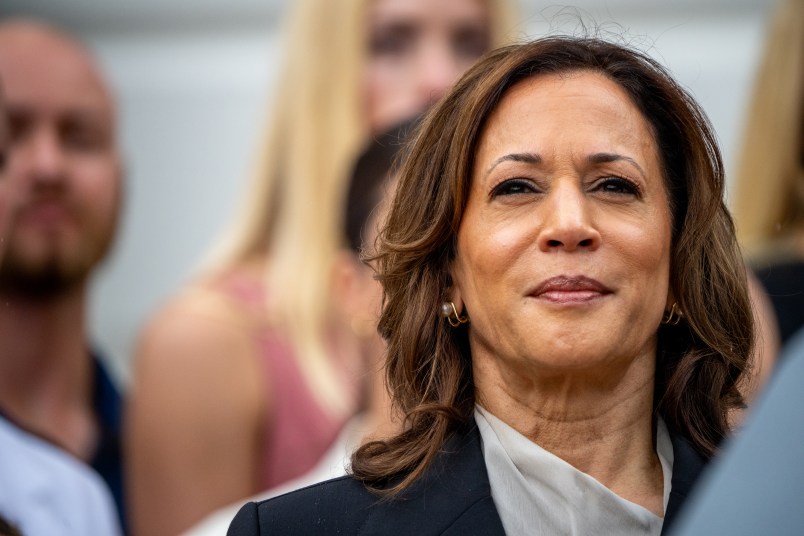Over the last week I’ve seen a number of new articles claiming again that Democrats shouldn’t be so sure Donald Trump is an easy beat in the fall. He could reshuffle the deck in unexpected ways and become a formidable candidate. Now, before sharing my thoughts on this I want to restate what I’ve been saying for months which is that I think that the range of possibilities in a Clinton v Trump match up is anything from a narrow Trump victory to a historic Clinton blow out. Trump can win. He has the inherent power of celebrity familiarity; Clinton has the inherent weakness of seeking a third term in power for her party; Trump has a galvanizing and clear message for aggrieved white voters; and, critically, he would basically be the first ever anti-trade liberalization, anti-globalization presidential candidate – a critically undeserved niche in the national party system. With all this said though it is important to see just how long a shot this ‘reshuffle the deck with white working class voters’ model really is.
Let’s start with some thought experiments.
We can see from the polls and the rallies that Trump draws heavily from the white middle and working classes. A more specific marker is voters who do and don’t have a college degree. But this isn’t 1950 or 1965. The vast majority of those people are already Republican voters, if not always registered Republicans.
Here’s the more operative question: if we’re using the stereotype of ‘white working class’ voters, how many white working class voters do you think Trump will pull in the general election who voted for Obama in 2008 and 2012? That second part of the equation is the critical one. Because if it’s voters who were already in the Republican column it doesn’t really matter in terms of reevaluating the 2000-2012 era electoral map. (Democrats would certainly love to get back some of those white voters; but that’s a different question.) My gut sense is that the Obama ’08, ’12/Trump ’16 number is pretty small. Maybe extremely small. If nothing else that hunch is backed up by a lot of highly suggestive if not dispositive polling data.
Let’s consider some data.
In 2012, Mitt Romney won 59% of the white vote to Obama’s 39%. And he lost. (In 2008, with McCain, it was 55% to 43%.) The most notable number is that Trump currently seems to be substantially underperforming that number. An ABC/Washington Post poll from early March found that Trump was winning white voters by a margin of 49% to 40% against Clinton. That’s definitely winning the white vote. But it is not even close to the margin Mitt Romney got and still lost.
That number alone, if it holds up at all, should stop a lot of the ‘reshuffling the deck’ thinking in its tracks. That theory posits a sort of Braveheart-esque raging last gasp of white people putting Trump over the top. But at least at the moment, he’s doing dramatically worse among whites than either of the last two guys who lost. That is, to put it mildly, a big problem for Trump.
The truth is that Trump would not only need to win dramatically more white voters than Romney (who lost); he’d need to expand the white electorate. Indeed, this claim comes up again and again. Trump, we’re told, can motivate demoralized white voters who haven’t voted recently or ever. But as Romney campaign strategist Stuart Stevens notes, this is fantasy. There aren’t any missing white voters. The voting rate among whites has been going up like other demographic subgroups in recent years. There just aren’t any missing ones out there, unless you opt for heroic/unicorn theories of turnout.
Of course, none of this factors in that the racial composition of the electorate has shifted measurably, if not dramatically, since 2012 and that Trump himself seems likely to drive historic levels of non-white turnout among the various groups he’s targeted – which, let’s be honest, is basically everyone who’s not white. It’s hard to see Hillary Clinton getting a higher percentage or turnout of the Black vote than Barack Obama did (though comparable now seems plausible). But it is quite possible that running against Trump will drive substantially stronger numbers – both in percentage and absolute terms – of Hispanic voters for Clinton.
All this isn’t enough? Try this. Pennsylvania is ground zero of the ‘reshuffle the deck’ thesis. The model is supposed to operate in a number of states like Michigan, Ohio, Pennsylvania, perhaps Wisconsin. Michigan usually comes in firmly in the Democratic column. Ohio is always an epic struggle. It went for Bush twice and Obama twice. Pennsylvania has been in the Democratic column since 1992 but it’s always a close run thing. If the model works we should see it there first. But a new Franklin and Marshall poll came out this morning showing Hillary Clinton beating Trump in the state by a 46% to 33% margin, in other words, crushing him.
Then there’s perhaps the biggest element working against Trump, something which is at once front and center and yet never quite in focus in these discussions: deeply divided parties do not win national elections. It is close to a rule of American politics and at least a strong principle in purely mathematical terms. The best counter is that Hubert Humphrey almost managed to comeback to beat Richard Nixon in 1968. But of course he didn’t. And the Wallace-ite fracture of the party portended the electoral and political realignment which created a dominant center-right coalition which dominated American politics for the next 40 years. People talk a lot about Trump’s ceiling in the 40%+ range or the fact that he may not be able to secure a majority of the delegates at the convention. But this is not so much a sign of weakness as profound division.
As I noted a few weeks ago, the 2016 cycle has revealed how much of our nominating process relies on unwritten rules which are themselves underwritten by relative party unity. Most presidential primaries don’t end when one candidate wins. They end when the other candidates no longer have a plausible shot at winning themselves. Once that is the case, their money dries up and party stakeholders usher them out of the race to consolidate around the dominant candidate. Usually the winner doesn’t officially clinch the nomination until the summer. But that framework only holds if the dominant candidate is – with a little work – broadly acceptable to, if not preferred by, all major party factions. That is clearly not the case here and it’s why the GOP seems headed to a blow up in Cleveland.
A fractured party is one that is vulnerable to factional third party candidates, low turnout in critical demographics and defections to the opposition party. In an era of profound partisan identification, I don’t doubt that the great majority of Republicans will come around to the Trump campaign. But in what is essentially a 50-50 country, even a few percentage points of drop off can and will be fatal. Whether Trump is denied the nomination, gains a tattered one or faces a third party conservative candidate may be secondary. The basic fracture does not look like something that can be healed before November. We don’t have much experience in recent historical memory with party fractures. Perot counts a bit but he wasn’t just drawing from one party. So he is at least somewhat different. You have to go back to 1968 to see a real example.
So what does this all mean? As I said, globalization, corporate-friendly trade liberalization … those have never had a presidential candidate behind them, even though they are embraced by a wide slice of the electorate across both parties. There’s also the three term hurdle. Finally there’s just that Trump is so different from conventional candidates that we need to be cautious about applying our conventional, historical rules of thumb. If I were running Hillary Clinton’s campaign I’d go in with the assumption that we’re battling a potentially very formidable candidate who can win. But for us who are watching, it’s important to see that the current available data says that is a long shot. The ‘reshuffle the deck with white working class voters’ idea, specifically, is simply not born out by any of the currently available data.








